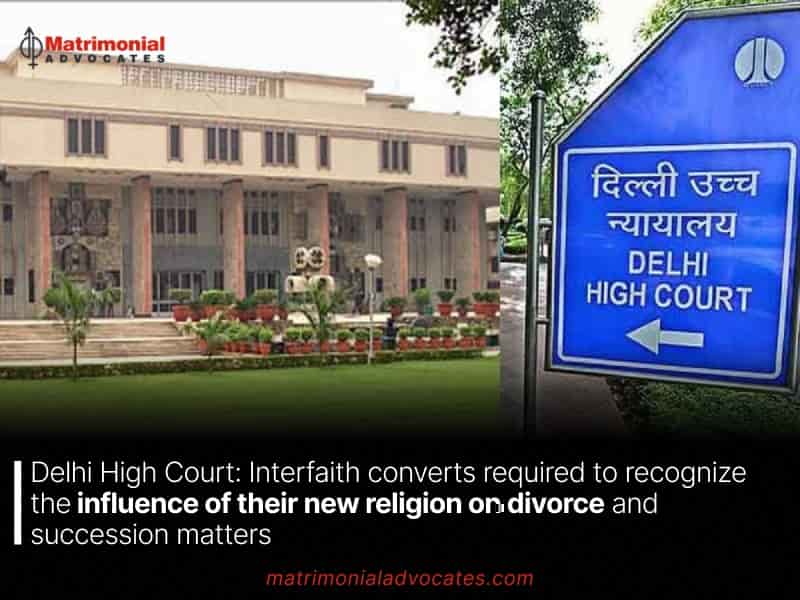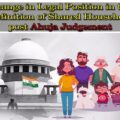
The Court said that the person who is converting to another faith must be explained the tenets, rituals, and expectations inherent in religious conversion.
On Friday, the Delhi High Court ruled that individuals changing their religion for marriage with someone from another faith must submit an affidavit declaring their understanding of the consequences and implications of the new religion concerning divorce, custody, succession, and religious rights (Maksood Ahmad v State of NCT of Delhi & Anr).
The Court, in response, issued comprehensive guidelines for authorities handling interfaith marriages post-conversion and for recording statements of sexual assault victims under Section 164 of the Criminal Procedure Code (CrPC).
As per the ruling, the certificate accompanying the conversion document must confirm that the individual undergoing conversion has been adequately briefed on the principles, rituals, and expectations related to religious conversion. It should also indicate a clear comprehension of the repercussions and outcomes in terms of marital divorce, succession, custody, and religious rights.
Additionally, the Court has stipulated that both the conversion and marriage certificates must be presented in an additional vernacular language that the prospective convert can understand. This requirement serves as tangible proof of the individual’s comprehension of the content within these documents.
“The same be in Hindi also where the language spoken and understood by the prospective convert is Hindi, in addition to any other language preferred to be used by such authority. Where the language spoken and understood by the prospective convert is other than Hindi, the said language can be used,” the Court said.
It was stressed that a sworn statement, encompassing information about age, marital history, and present marital status, supported by relevant evidence, must be submitted. The affidavit should expressly declare that the conversion is a voluntary choice made with a comprehensive understanding of the potential repercussions and outcomes concerning marital divorce, succession, custody, and religious rights.
Justice Swarana Kanta Sharma explicitly mentioned that these instructions do not apply to individuals returning to their original religion, as they are already acquainted with their original faith. The Court also made clear that these guidelines do not relate to marriages conducted under the Special Marriage Act, 1954.
“These guidelines are for ensuring well-informed decision on the part of the naive, uneducated, susceptible, adolescent couples who may enter into such unions after conversions, without fully comprehending the profound implications of such a conversion, impact of which extends far beyond the immediate union, encompassing a myriad of consequences on their personal laws and various facets of life,” the Court said.
Concise Guidelines for Recording Statements under Section 164 of the Criminal Procedure Code (CrPC):
- Statements should be crafted in a language understood by the victim, avoiding mechanical or typed formats.
- The victim must be promptly presented before the magistrate, with the Investigating Officer (IO) identifying them before recording begins.
- Preliminary inquiries by the magistrate assess the victim’s competency through age-appropriate and educationally relevant questions.
- Questions delve into the victim’s state of mind, addressing awareness, purpose, and reasons behind the statement.
- Inquiries ensure the statement’s voluntary nature, free from threat, pressure, fear, influence, coercion, or tutoring.
- For child victims, the magistrate emphasizes the sanctity of oath, potentially waiving it for tender age.
- Preliminary inquiries and statements are conducted in the vernacular, avoiding typed or stereotyped formats.
- The victim’s words are transcribed verbatim, describing the act without euphemisms to prevent contention during trial.
- The magistrate appends a certificate affirming the statement’s voluntary nature, accuracy, and absence of additions or omissions.
- The certificate notes that the statement was read and explained to the victim, who signed or provided a thumb impression in the magistrate’s presence.
- If typed by a stenographer or interpreter (an exception), it’s clarified that it was done at the magistrate’s dictation, representing the true content.
These guidelines were established by the Court while rejecting a plea to quash an FIR against a man under Sections 376 (rape) and 506 (criminal intimidation) of the Indian Penal Code (IPC), despite the complainant and accused getting married.
In the complaint, the woman alleged rape by Maksood Ahmad on September 24, 2022, and the FIR was filed on October 18, 2022. Despite the woman converting and marrying Ahmad on the same day, his arrest occurred on November 18, 2022.
Though the woman claimed divorce from her first husband during her marriage to Ahmad, the Court found no supporting evidence, as Ahmad was already married. Despite the couple’s desire to quash the FIR due to their union, the Court emphasized the woman’s ineligibility for remarriage when marrying Ahmad. It underscored that subsequent marriage does not automatically justify FIR quashing in cases under Section 376 of the IPC.
“This Court also looks such marriage with suspicion, and the bona fides of accused are also unclear, since the marriage in this case was immediately solemnized i.e. within a period of ten days of registration of FIR, after getting the religion of prosecutrix converted to Islam, and it cannot be ascertained at this stage as to whether the religious conversion in this case was with a bona fide intent to only marry the prosecutrix or to clandestinely project to the prosecutrix that now she was married to the accused and that both of them could now approach the Courts for seeking bail and for quashing of the FIR.”
Justice Sharma ultimately concluded that dismissing the proceedings would equate to permitting the misuse of the legal process by both parties.
“Thus, in view of the above facts and circumstances, this Court does not find it a fit case to quash the FIR,” the Court held.





